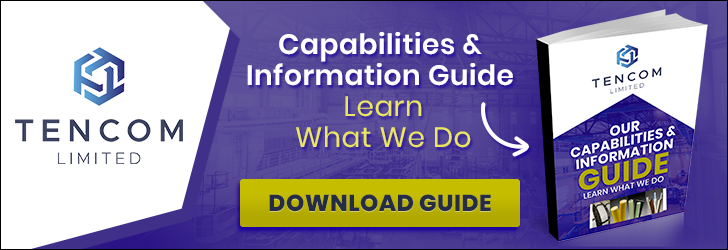
When selecting fiberglass materials for your next project, you may encounter two primary manufacturing methods: pultrusion and extrusion. While both processes create fiberglass products, they differ significantly in their approach and resulting characteristics. Understanding these differences is crucial for choosing the right material for your specific application.
In this article, you'll explore the key distinctions between pultruded and extruded fiberglass, including their production methods, physical properties, and ideal use cases. By the end, you'll have a clear understanding of which type of fiberglass best suits your needs, ensuring optimal performance and longevity for your project.
Understanding Pultruded Fiberglass
Pultruded fiberglass is a high-performance composite material created through a unique manufacturing process known as pultrusion. This method involves pulling continuous fibers through a resin bath so the resin adheres to the fiber surface and then through a heated die, which cures the resins to a non-reversible solid state, resulting in a strong, lightweight product with exceptional mechanical properties.
Key Characteristics
Pultruded fiberglass boasts several distinctive features that set it apart:
-
Strength-to-Weight Ratio: The continuous fiber reinforcement yields a product with superior strength relative to its weight.
-
Dimensional Stability: The pultrusion process ensures consistent cross-sections along the entire length of the product.
-
Corrosion Resistance: The combination of fibers and resins creates a material highly resistant to chemical and environmental degradation.
Applications
Due to its unique properties, pultruded fiberglass finds use in various industries:
-
Construction: Used in structural components, bridges, and walkways
-
Electrical: Employed in insulators, cable trays, and utility poles
-
Transportation: Applied in automotive parts and railway components
Understanding the characteristics and applications of pultruded fiberglass is crucial when comparing it to other manufacturing methods like extrusion.
Exploring Extruded Fiberglass
The Extrusion Process
The extrusion process involves melting a thermoplastic material and forcing the liquid through an orifice to form the shape and then holding that shape of the molten plastic while it is cooled to a solid.
Fiberglass can be included in this process in various ways. A Braided or knit fiberglass section can be fed into the process so that the molten plastic can form around it. Fiberglass can be added to molten plastics and then cut into small pieces to be re-melted in the extrusion process and the mixed combination of fiberglass and molten resin can be fed through the shaping orifice to be cooled to a solid.
Other adaptations for forming the molten plastic around the fiberglass are also available.
Key Properties and Applications
Extruded fiberglass boasts several unique properties that make it suitable for various applications. Its lightweight nature, combined with good thermal insulation and electrical resistance, makes it ideal for construction and electrical industries. The material also exhibits excellent resistance to chemicals and weathering, enhancing its durability in controlled-temperature outdoor environments.
Compared to Other Fiberglass Types
While extruded fiberglass offers many benefits, it generally has lower strength-to-weight ratios than pultruded fiberglass. However, its manufacturing process allows for more complex shapes and profiles, making it versatile for applications requiring intricate designs.
The products are made from a plastic that will soften and melt so the choice of which plastic to be used can depend on the temperature at use. Understanding these characteristics is crucial when selecting the right plastic and fiberglass type for specific projects.
Pultruded vs. Extruded Fiberglass: Key Differences Compared
When comparing pultruded and extruded fiberglass, several key differences emerge in terms of manufacturing processes, material properties, and applications. Understanding these distinctions is crucial for selecting the right type of fiberglass for your specific needs.
Manufacturing Process
Pultrusion involves pulling continuous fibers through a resin bath and then a heated die, creating a uniform cross-section. In contrast, extrusion pushes molten material through a die, resulting in a more flexible production results.
Material Properties
Pultruded fiberglass typically offers superior strength-to-weight ratios and dimensional stability. Extruded fiberglass, while generally less strong and temperature sensitive, provides different flexibility and customization options.
Applications
Pultruded fiberglass excels in structural applications requiring high strength and corrosion resistance, such as bridge components and utility poles. Extruded fiberglass finds its niche in non-structural applications like window frames and decorative elements, where design flexibility is paramount.
By weighing these differences, you can make an informed decision on which type of fiberglass best suits your project requirements.
Conclusion
As you consider fiberglass options for your project, understanding the key differences between pultruded and extruded fiberglass is crucial. While both offer excellent strength-to-weight ratios and corrosion resistance, pultruded fiberglass excels in structural applications due to its superior strength and customizable profiles. Extruded fiberglass, on the other hand, shines in high-volume, standardized production scenarios.
By weighing factors such as required strength, production volume, and cost considerations, you can determine which process best suits your specific needs. Ultimately, both pultruded and extruded fiberglass have their place in modern manufacturing and construction, each offering unique advantages that can be leveraged to create innovative, durable solutions for a wide range of applications.















